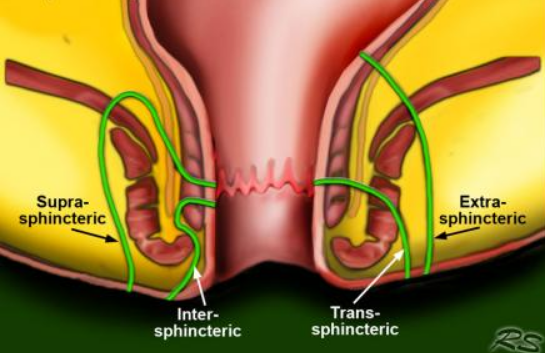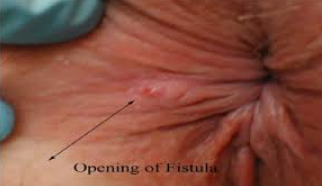What is it?
Fistula in Ano is an abnormal tract communicating between the anal skin and the anal canal or rectum through identifiable openings.
What can cause it?
- Infection in the anal gland (Cryptoglandular)
- Inflammatory bowel disease
- Trauma
- Malignancy

How does fistula in ano present?
- Individuals with fistula in ano can present with
- Perianal swelling
- Perianal discharge : pus / blood
- Perianal / Gluteal pain
- Fever

Principles of Surgery
The aim of fistula surgery is to achieve closure and complete healing of the fistula tract, whilst preserving the integrity of the anal sphincters. This is important as to avoid risks of faecal soiling or incontinence. There are many types of surgery for fistula in ano depending on the presentation and type of fistula.
Diagnostic investigations may be performed to diagnose and to determine the characteristics of the fistula, or to identify any associated infections before any treatment is offered.
Investigations in the form of an endoanal ultrasound or pelvic MRI scan may be arranged.
- Individuals with fistula in ano can present with
- Perianal swelling
- Perianal discharge : pus / blood
- Perianal / Gluteal pain
- Fever
Surgical treatments for fistula in ano
- Incision and drainage: Drainage of any collections which may involve an incision over the skin followed by the insertion of the plastic tube (seton). This is normally performed for individuals who present with perianal abscess.
- Fistulotomy : This type of surgery involves cutting and laying open the fistula tract. This procedure is particularly used in individuals where there is minimal anal sphincter muscle involvement e.g. in a low fistula.
- Fistulectomy : The fistula tract can be cored out through a fistulectomy.
- Fistula plug : This surgery involves tunneling a plug through the fistula tract. This is a form of sphincter preserving surgery, especially used where significant sphincter muscle is involved (high fistula in ano).
- Ligation of Intersphinteric fistula tract (LIFT) : This type of surgery involves ligating and dividing the fistula tract as it traverses between the two layers of muscle which form the anal sphincter.
- Fistula tract laser closure (FiLaC) : This surgery involves obliterating the fistula tract with a laser probe which generates intense heating.
- Advancement flap: This surgery involves closing/ covering the internal opening of the internal opening of the fistula using native tissue.
Patients who present with fistula in ano will be assessed and offered the most appropriate treatment option tailored to their clinical condition. The patient will be counselled about the pros and cons of treatment and the expected outcomes of their management plan. It is not uncommon that fistula may fail to heal or recur following initial treatment. Certain patients may therefore require repeated treatments, sometimes involving different treatment modalities, in the attempt to achieve closure of the fistula.

